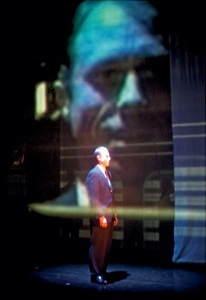B IS FOR BOOING
George Osborne about to hand out medals of the Paralympic Games suddenly realising that he's being booed by the entire Olympic Stadium, 3 September 2012. Photo: Press Association
Contemporary Theatre Review have published a special issue entitled A Lexicon of Theatre and Performance, in part-tribute to David Bradby who co-edited and relaunched it in 2003 with Maria Delgado. The form of the journal issue is an alphabet of theatre from Archives to Zeitgeist. I was asked to do Booing; I didn't ask why, though I offer a small history of mid-century British booing in 1956 and All That. It was a really interesting challenge because I wanted to range as widely as possible. David Wiles (RHUL) and Martin White (Bristol) were very helpful in helping me locate debates about audience behaviour in the Ancient Greek and Elizabethan/Jacobean theatres. I found a wealth of references in Jonson, whose dramaturgy is marked throughout by a series of futile efforts at regulating the audience, and in Modernism, which claims to like booing, but doesn't really. I discovered that booing is relatively recent and relatively Anglo-American (whistling is more common elsewhere). I'm pleased finally to be able to talk about the extraordinary tale of Walter Reynolds's Young England (1934), a kind of unintended Rocky Horror of the 1930s. The piece is playful, but offers a genealogy of booing, some thoughts on booing and Ranciere, speculations on animal noises and free will, and a wealth of examples. You can read it here.


![photo[1].jpg](https://images.squarespace-cdn.com/content/v1/513c543ce4b0abff73bc0a82/1362919072201-PZO854G4SEB794DVOEI8/photo%5B1%5D.jpg)
